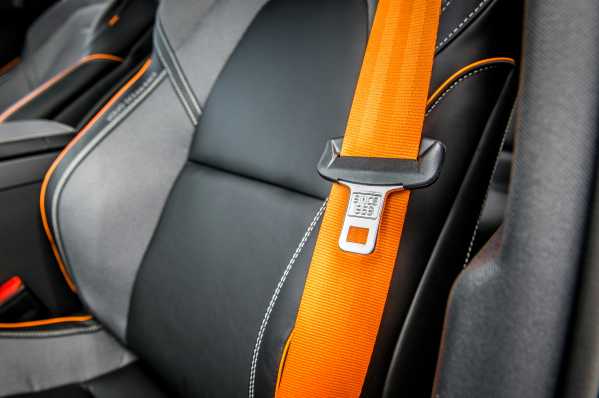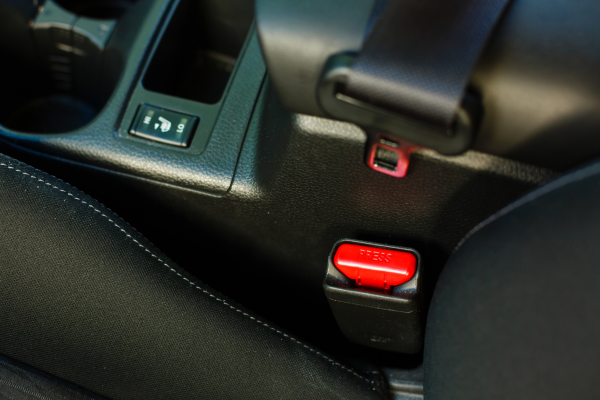Vehicle Safety
The Risks of Wearing an Automatic Seat Belt: What You Need to Know

The Risks of Wearing an Automatic Seat Belt: What You Need to Know
History of Automatic Seat Belts
Automatic seat belts were introduced in the 1980s as a compliance measure for federal safety regulations in the United States. They were intended to ensure that passengers would use seat belts without having to manually engage them. These belts typically ran along a track and fastened automatically when the car door was closed. Despite seeming like a convenient safety feature at the time, they came with a set of unintended consequences.
Design Flaws
One of the primary issues with automatic seat belts is their design complexity, which can lead to malfunction over time. The following are some notable design flaws:
Mechanical Failures
The intricate mechanisms required for the seat belts to automatically fasten can break down, leading to the belts failing to secure occupants properly.
Improper Fit
Automatic seat belts may not adjust well to all body types, resulting in an improper fit that compromises their effectiveness in a crash.
False Sense of Security
Because they engage automatically, passengers may underestimate the need to wear additional restraints like lap belts, increasing the risk of injury in an accident.
Safety Concerns
Despite their initial appeal, automatic seat belts have been associated with various safety concerns over the years. Here are some key points to consider:
Partial Protection
Most automatic seat belt systems only provide upper torso restraint, leaving the lower body unprotected. This can contribute to significant injuries in the event of an accident, as the lap belt plays a crucial role in protecting the pelvic area and preventing submarining (sliding out from under the belt).
Entrapment Hazard
In rare cases, the mechanisms of automatic seat belts can malfunction and trap occupants in their vehicles. This creates a potentially dangerous situation, especially in emergencies where quick evacuation from the vehicle is necessary.
False Compliance
The automatic mechanism may give a misleading indication that the vehicle is compliant with modern safety standards, potentially leading to relaxed attitudes toward other necessary safety practices. Passengers may neglect to check their seat belts or other safety features, assuming the automatic system will keep them secure.
Given the risks associated with automatic seat belts, it's essential for vehicle owners to regularly inspect their seat belt systems and ensure they function correctly. Modern advancements in automotive safety have largely overshadowed the automatic seat belt systems of the past, favoring more reliable and comprehensive restraint systems. When purchasing a vehicle, it's crucial to consider these factors and choose the safest possible options for you and your passengers.
Understanding the limitations and potential hazards associated with automatic seat belts can help you make more informed decisions about vehicle safety, contributing to a safer driving experience for all.
Vehicle Maintenance
Repairing Your Car's Seat Belt: A Step-by-Step Guide
Vehicle Safety
Demystifying Airbag Modules: Your Questions Answered
Vehicle Safety
Fixing a Stuck Seat Belt: Your DIY Guide
The Risks of Wearing an Automatic Seat Belt: What You Need to Know
History of Automatic Seat Belts
Automatic seat belts were introduced in the 1980s as a compliance measure for federal safety regulations in the United States. They were intended to ensure that passengers would use seat belts without having to manually engage them. These belts typically ran along a track and fastened automatically when the car door was closed. Despite seeming like a convenient safety feature at the time, they came with a set of unintended consequences.
Design Flaws
One of the primary issues with automatic seat belts is their design complexity, which can lead to malfunction over time. The following are some notable design flaws:
Mechanical Failures
The intricate mechanisms required for the seat belts to automatically fasten can break down, leading to the belts failing to secure occupants properly.
Improper Fit
Automatic seat belts may not adjust well to all body types, resulting in an improper fit that compromises their effectiveness in a crash.
False Sense of Security
Because they engage automatically, passengers may underestimate the need to wear additional restraints like lap belts, increasing the risk of injury in an accident.
Safety Concerns
Despite their initial appeal, automatic seat belts have been associated with various safety concerns over the years. Here are some key points to consider:
Partial Protection
Most automatic seat belt systems only provide upper torso restraint, leaving the lower body unprotected. This can contribute to significant injuries in the event of an accident, as the lap belt plays a crucial role in protecting the pelvic area and preventing submarining (sliding out from under the belt).
Entrapment Hazard
In rare cases, the mechanisms of automatic seat belts can malfunction and trap occupants in their vehicles. This creates a potentially dangerous situation, especially in emergencies where quick evacuation from the vehicle is necessary.
False Compliance
The automatic mechanism may give a misleading indication that the vehicle is compliant with modern safety standards, potentially leading to relaxed attitudes toward other necessary safety practices. Passengers may neglect to check their seat belts or other safety features, assuming the automatic system will keep them secure.
Given the risks associated with automatic seat belts, it's essential for vehicle owners to regularly inspect their seat belt systems and ensure they function correctly. Modern advancements in automotive safety have largely overshadowed the automatic seat belt systems of the past, favoring more reliable and comprehensive restraint systems. When purchasing a vehicle, it's crucial to consider these factors and choose the safest possible options for you and your passengers.
Understanding the limitations and potential hazards associated with automatic seat belts can help you make more informed decisions about vehicle safety, contributing to a safer driving experience for all.
Vehicle Maintenance
Repairing Your Car's Seat Belt: A Step-by-Step Guide
Vehicle Safety
Demystifying Airbag Modules: Your Questions Answered
Vehicle Safety
Fixing a Stuck Seat Belt: Your DIY Guide


